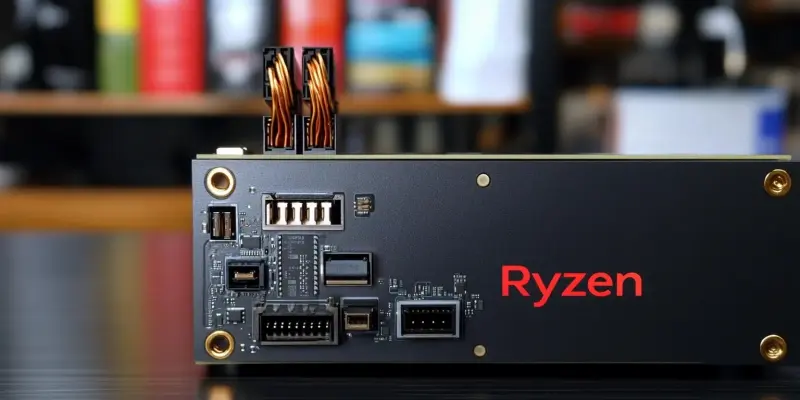The tech industry has recently been witnessing an unexpected yet intriguing trend as AMD’s Ryzen 7 9800X3D experiences skyrocketing demand, clearly outstripping initial market expectations. This surge has directly resulted from shortcomings in Intel’s Arrow Lake processors, leading consumers to favor AMD’s successful CPU. Despite being part of the somewhat underwhelming Zen 5 lineup, the 9800X3D emerged as the uncontested king of gaming CPUs, significantly outshining its counterparts in the Ryzen 9000 series. The heightened demand has resulted in notable shortages and inflated prices on secondary platforms like eBay, highlighting the potent combination of a successful product and an industry rival’s struggles.
Factors Driving the Demand Surge
The reasons behind the surging demand for the Ryzen 7 9800X3D become evident against the backdrop of a CES 2025 roundtable where AMD executives shed light on the issue. Acknowledging the increased demand, AMD’s Frank Azor noted that Intel’s faltering Arrow Lake processors played a significant role. Intel’s Arrow Lake CPUs faced considerable criticism for their lackluster gaming performance, higher latency, and compatibility challenges. Even with Intel’s attempts to address these problems through updates, the initial fixes only exacerbated the situation, failing to alleviate the performance and compatibility issues. These drawbacks within Arrow Lake made AMD’s offerings even more appealing to consumers who seek top-tier gaming experiences.
The 3D V-Cache technology that AMD integrated into the Ryzen 7 9800X3D gave it a competitive edge in the gaming arena. This advanced technological feature further improved performance, distinguishing itself from the non-X3D Ryzen 9000 series CPUs. Recognizing the market’s tilt towards the 9800X3D, AMD is now ramping up production. Nonetheless, the intricacies involved in the elaborate 3D V-Cache stacking process mean that the expanded production capacity won’t immediately flood the market. This temporal gap has not dampened consumers’ enthusiasm, as they continue to prize the Ryzen 7 9800X3D for gaming, contributing to the ongoing shortage and price surge.
Intel’s Troubles and AMD’s Market Leverage
Intel’s Arrow Lake processors were intended to bring substantial advancements to the table. However, the flaws in their gaming performance and the ensuing higher latencies led to a substantial consumer shift towards AMD. Even though Intel made attempts to rectify these issues through software updates, it hasn’t been sufficient. The lingering problems have significantly affected Intel’s reputation in the gaming community. This scenario has allowed AMD to capitalize on Intel’s technical missteps adeptly. As Intel faces headwinds, AMD benefits from a significant boost in consumer confidence and preference, consolidating its position in the CPU market, especially among gamers.
Adding to its strategic production efforts, AMD announced further expansions with the 16-core Ryzen 9 9950X3D and 12-core Ryzen 9 9900X3D. However, as per statements from AMD’s David McAfee, it is crystal clear that the demand for the 8-core Ryzen 7 9800X3D outstrips any preference for the higher-core models. Gamers, who prioritize optimized performance, find the 8-core Ryzen 7 9800X3D the most appealing option. Its combination of cutting-edge technology, superior gaming performance, and AMD’s responsive strategy confirms its top position in the consumer market.
The Future of CPU Market Dynamics
The tech industry is currently witnessing an unexpected yet fascinating trend: AMD’s Ryzen 7 9800X3D is experiencing a massive surge in demand, which far exceeds initial market expectations. This spike in interest can be attributed to the shortcomings of Intel’s Arrow Lake processors, compelling consumers to opt for AMD’s more successful CPU. While the 9800X3D is part of the Zen 5 lineup, which has received mixed reviews, it has risen as the unmatched leader in gaming CPUs, eclipsing other models in the Ryzen 9000 series. This heightened demand has led to significant shortages and inflated prices on secondary platforms like eBay. It’s a stark demonstration of what happens when a product hits the mark with consumers while a competitor struggles. Despite being initially underestimated, the 9800X3D’s performance in gaming has secured its position as a preferred choice among users. This situation underscores the powerful impact that effective technology, combined with a competitor’s missteps, can have on the market.

